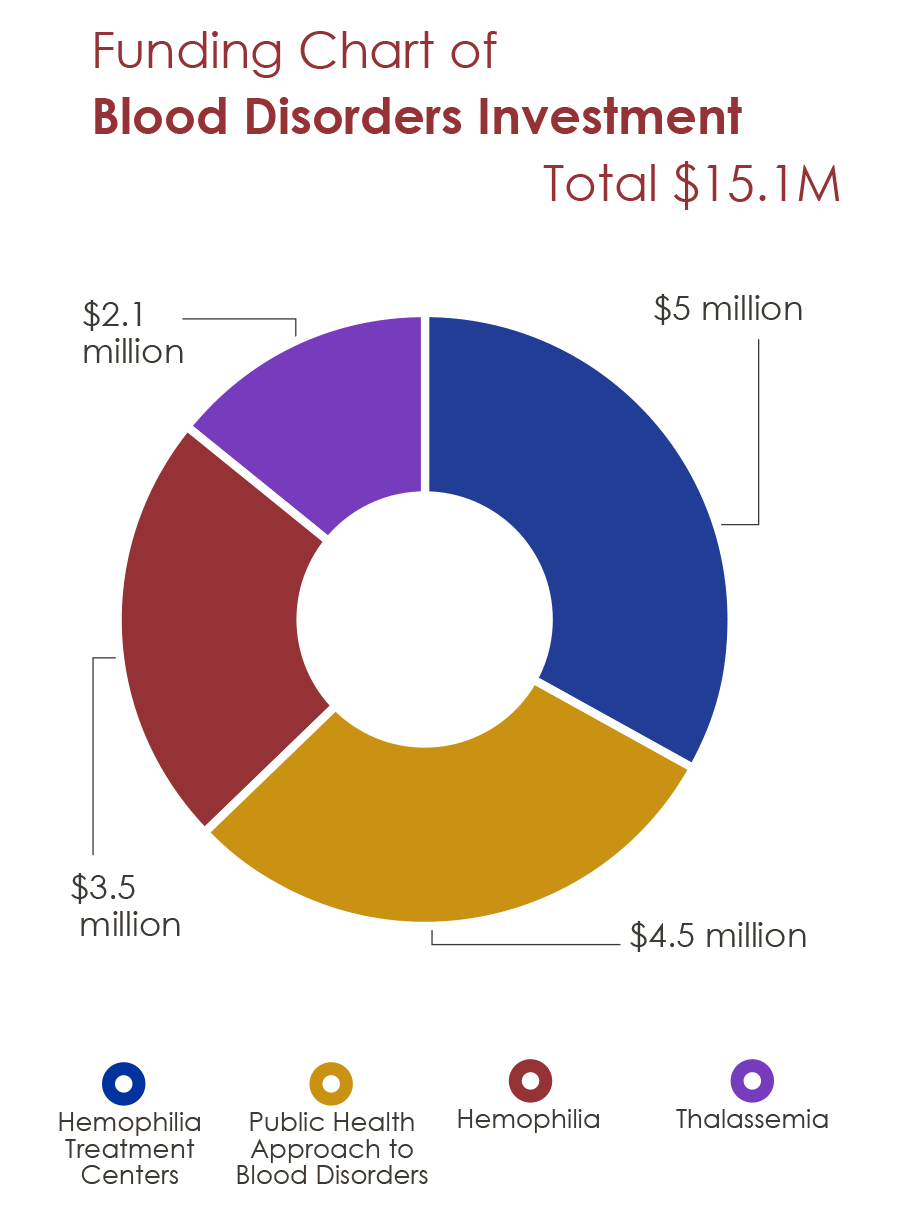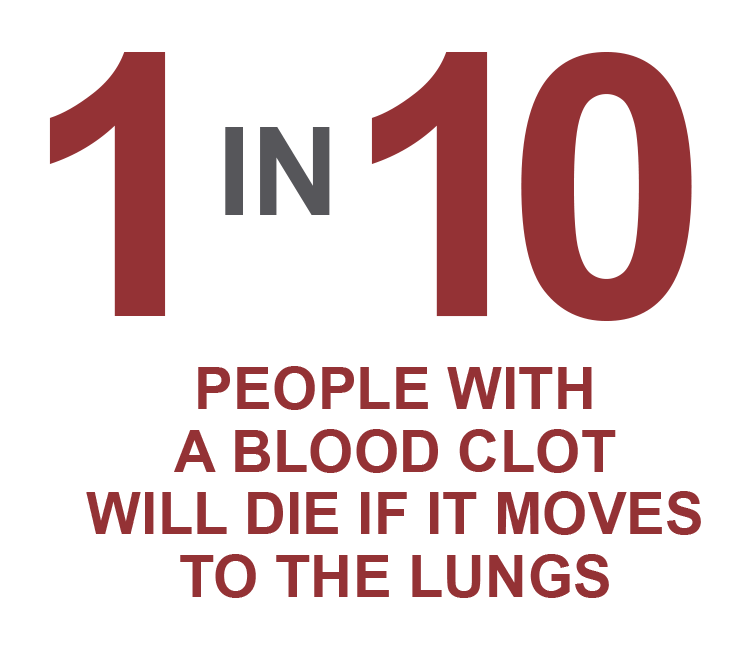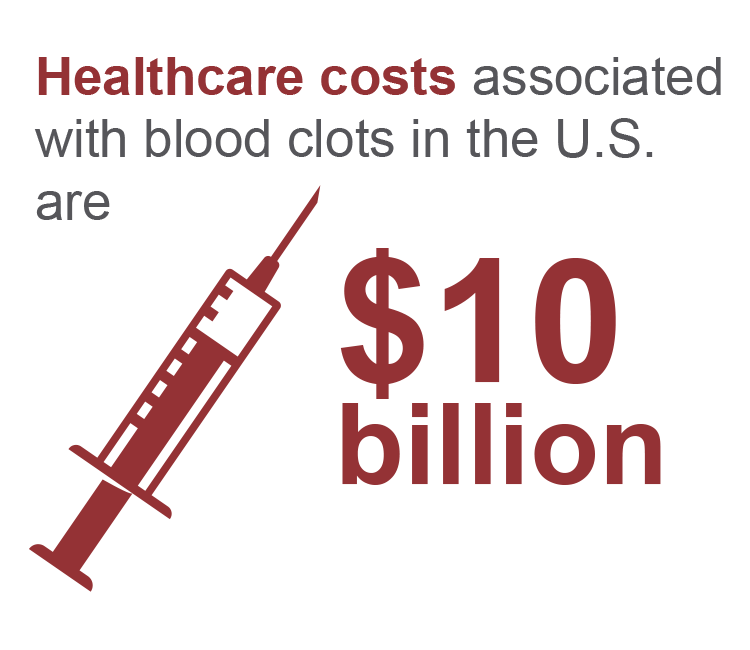Protecting People

1 in 76 Americans are born with a blood disorder.
People with blood disorders are living longer than ever before, but with far too many medical complications that could be prevented. These conditions have serious, sometimes fatal, health consequences and cost our healthcare system billions of dollars every year. CDC’s National Center on Birth Defects and Developmental Disabilities (NCBDDD) invests in activities that increase understanding of blood disorders, advance medical care and treatments, and improve outcomes for all people affected by blood disorders.

How NCBDDD makes a difference
Hemophilia Treatment Centers
NCBDDD works with funded partners to implement the Community Counts project in hemophilia treatment centers (HTCs) across the United States, raising participation among all 136 federally-funded HTCs (as of July 31, 2016) to 100% for the HTC Population Profile, 92% for the Registry for Bleeding Disorders Surveillance, and 91% for Mortality Reporting.
Public Health Approach to Blood Disorders – NCBDDD recognized and shared best practices on preventing blood clots in hospitalized patients. NCBDDD supported and coordinated the development of a publication highlighting the public health impacts of SCD on patients, healthcare providers, and healthcare systems, and work being done to improve the lives of people living with SCD.
Hemophilia
NCBDDD supports inhibitor testing as part of the Community Counts Registry for Bleeding Disorders Surveillance, and provided the first ever estimates of the burden of inhibitors among people in the United States with hemophilia. An inhibitor is a potentially serious health problem affecting people with bleeding disorders that stops or “inhibits” their treatment product from working, which makes it harder to stop or prevent a bleeding episode.
Thalassemia
Thalassemia is a group of genetic red blood cell disorders that cause an anemia beginning at birth and lasting throughout life. As a result of extensive outreach over the last 3 years, enrollment in the thalassemia patient database has increased by 27%, reaching 1,014 persons diagnosed with this rare disorder of red blood cells.
2016 Successes
-
Community Counts
Community Counts is a public health monitoring program funded by NCBDDD. The project’s purpose is to gather and share information about common health issues, medical complications, and causes of death that affect people with bleeding disorders cared for in Hemophilia Treatment Centers in the United States. Community Counts aims to continue the work of the Universal Data Collection System, which ended in 2011. -
Hemoglobinopathy Screening Primer
NCBDDD and the Association of Public Health Laboratories worked with experts on newborn screening (testing newborns for treatable conditions before symptoms develop) from six state health departments to develop a Hemoglobinopathy Screening Primer. This resource can be used to guide development of newborn screening programs for hemoglobinopathies (sickle cell disease and similar conditions). This guidance document, available online, is an essential resource for all health departments to improve their hemoglobinopathy screening programs. -
Stop the Clot
NCBDDD partnered with the National Blood Clot Alliance to fund the ‘Stop the Clot, Spread the Word’ campaign, an online social and news-based media campaign focused on empowering U.S. patients and families to learn about the surprisingly common risks for developing blood clots. In the first year alone, Stop the Clot reached 50 million people online, and over the next several years will educate millions more about how women can prevent clots during pregnancy, and patients can prevent them during hospitalizations or cancer treatments.


Priorities for the future
- Understanding burden: Harness new tools to analyze electronic health records, state-wide monitoring systems, and existing healthcare databases to understand the populations affected by blood clots and hemoglobinopathies.
- Improving prevention: Work with partners to promote better treatment and follow-up care options for people affected with blood disorders.
- Empowering people to participate and learn: Create tools and awareness campaigns to teach Americans about the power they have to prevent blood disorder complications and to find the right healthcare provider.
- Reducing health disparities: Connect vulnerable populations affected by blood disorders with healthcare centers and support systems to ensure access to consistent and high-quality care.
- Page last reviewed: September 19, 2017
- Page last updated: September 19, 2017
- Content source:


 ShareCompartir
ShareCompartir